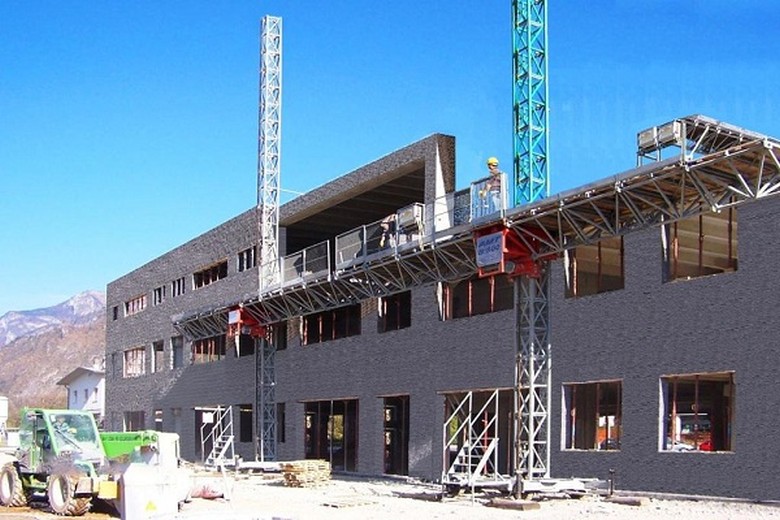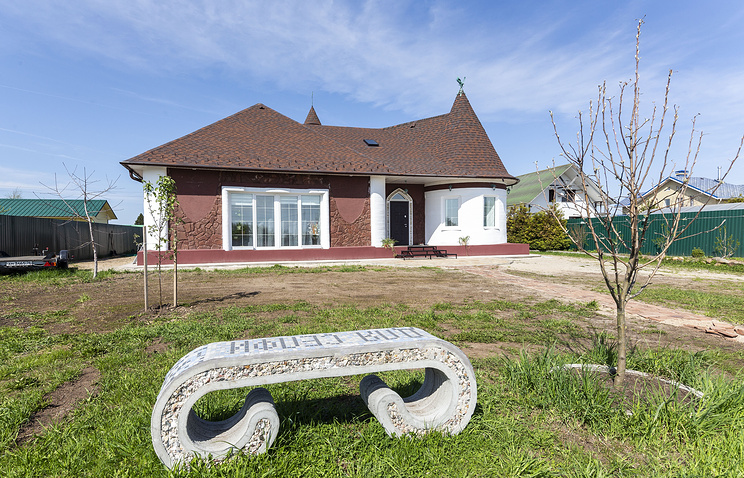
AMT-Spetsavia, a Yaroslavl machine-building company, initially engaged in the production of professional CNC equipment, but in 2012 noticed a growing market interest in the printing of housing. In 2015, for the first time in Russia, the company launched mass production of construction printers (COP-printers, Construction Objects Printing). And now
announced the release of the second generation.
Until today, the company has produced only small printers for printing single-story buildings. The new models have a much larger working field. With a certain modification, it can be increased to 31 × 11 × 81 meters, which generally makes such a printer the largest in the world. Although it is unlikely that anyone would dare to print 81 meters of “candles”, so in practice setting a world record is unlikely.
Two new models of
AMT S-300 and
AMT S-500 for the first time for a manufacturing company are equipped with a direct-flow print head. Due to this, the printing speed increased from 0.6 cubic meters of concrete per hour to 2.5 cubic meters per hour.
The working area of these models:
- S-300: 11.5 × 11 × 5.4 m
- S-500: 11.5 × 11 × 15 m (expands to 31 × 11 × 81 m), the price is $ 380 thousand
The manufacturing company has announced that a concrete preparation and supply station has been developed specifically for new printer models. It is matched to the printhead in terms of performance and extrusion speed. The mixture supply station is included in the basic package along with a high-pressure sink for servicing equipment.
The first buyer of the new model S-500 was the Indian developer company, which plans to build cheap housing up to 10 floors in the southern and eastern states of India. The engineers of AMT-Spetsavia specially adapted the printer for Indian climatic conditions. In Russia, developers are not too keen on technical innovation. There are too many questions and complaints about this mode of production.
The company
claims that it is really possible to live in homes printed in this way. The first such house in the CIS and Europe was presented on October 24, 2017. The house with an area of 298.5 square meters was put into operation and put on cadastral registration, and now the family lives in it. The estimated lifetime of the building is 150 years.
Apparently this one-of-a-kind house is the
home of Alexander Maslov , who himself sells equipment for building houses. If so, then in a sense, Alexander sacrificed his home for demonstration purposes to promote the business.

However, here the printer printed only the walls of the house.
Outsiders have not yet decided to use the novelty for the construction of their homes. So far, the main buyers are printing something like these shops, as in the photo above: “Printing a shop is 30 minutes. Its cost is about a thousand rubles. Merchants sell an average of 5 thousand rubles. And one Moscow company - for 30 thousand, ”
says Alexander Maslov sadly. He wants his machines to print not only shops and flowerbeds, but at home.
To date, the company has sold about 80 printers. On this equipment are printed fountains in Chisinau, tiles in the Czech Republic, elements for houses in Bulgaria and so on. But it is normal to use such printers for printing houses while they are afraid all over the world. Maslov himself says that it is worth “filtering” the flow of news that there and there the developers made a 3D printer and printed a house or a quarter with it. In fact, this technology is still at the beginning of its development. Most devices are prototypes that work in test mode, just the media inflate the hype and it seems that 3D printing is everywhere: “The news was - the Chinese farmer made a 3D printer and prints greenhouses. Everyone is delighted! In the video so: he has a cart, and on top a converted bucket. No electrics there. He pours concrete into the bucket and drags the cart along the guide - pouring the foundation. That is, he himself runs instead of a motor. So what? Prints! Additive technology.
Together with the release of new models, AMT Spetsavia has finally agreed not only to sell printers, but also to fulfill orders itself. The first houses will be built for their employees, and then they count on clients from outside, first of all - freelancers. The walls of a small house at a cost of 50 thousand rubles, and you can sell for 200-250 thousand, the final price of the entire construction - up to a million rubles, Alexander thought.